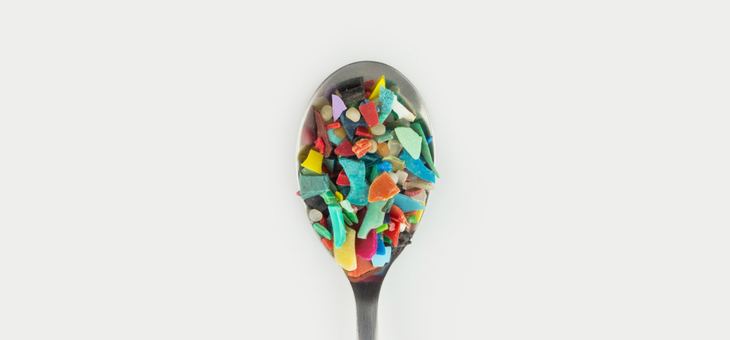In every 100 grams of some varieties of rice, there are three to four milligrams of plastic, according to research from the University of Queensland (UQ).
UQ’s Dr Jake O’Brien says levels of plastic in precooked or instant rice is four times higher than in uncooked rice, averaging 13 milligrams per serve.
“There’s a lot of processes that actually go on between growing rice through to the final production and so it’s likely that this contamination is entering during this processing,” he said.
The result is that Australians might be consuming a gram of plastics every year, just by eating rice.
Washing rice before cooking reduces plastic contamination by 20 to 40 per cent.
Rice is the most consumed food in the world and is a food staple for more than 3.5 billion people.
The alarming report won’t be a surprise to South Korean researchers, who say microplastics are contaminating agricultural land as well as the oceans, affecting the interaction between soil and plants.
“Most studies have focused on the marine environment, but substantial amounts of microplastics can be generated in the agricultural environment via weathering and fragmentation of plastic products used in agricultural practices,” said lead researcher Seung-Kyu Kim.
An earlier Norwegian study estimated that between 100,000 and 660,000 tonnes of microplastics are dumped onto agricultural soils in the US and Europe every year.
Read more: The risk of microplastics
“The potential sources of microplastics in the agricultural environments include sewage sludge, compost, irrigation of wastewater, road run-off, atmospheric deposition and plastics in agricultural practice. Microplastic can also come from organic fertiliser from biowaste, as several studies have recently shown,” reports zmescience.com.
“It is estimated that 79 per cent of 6.3 billion tonnes of the total plastic waste generated in 2015 accumulated in landfills or the natural environment and 7 per cent of the plastics produced globally were utilised for agriculture. Plastic mulching, which covers a large part of the European agricultural surface, has grown rapidly in recent years worldwide. Polyethylene films have also been widely used in greenhouses and seem to be contributing to microplastic pollution.”
Dr O’Brien told Yahoo News Australia it is not known how much plastic is in our food.
“Currently, there are many unknowns about how harmful consuming microplastics is to human health, but we do know exposure can cause an element of risk.”
Plastics and the pollutants they pick up from the environment could contribute to endocrine disruption, cancer, heart attacks, dementia, damage to organ systems and hormonal issues including thyroid disorders.
Read more: How plastics affect animals
The AFR reports that each grain of rice has a large surface area, so “a relatively large amount of plastic can accompany a relatively small amount of rice”.
“As the rice becomes contaminated before being wrapped, buying it in plastic or paper makes no difference. Neither does shaking it. Only washing will help.”
Plastics have been ubiquitous since the 1950s. Plastic production exceeded 360 million tonnes in 2019 and shows no sign of waning.
Microplastics are defined by medicalnewstoday.com as “tiny pieces of plastic less than 5 millimetres long. Their small size means that they can travel easily throughout the ocean. Animals may mistake them for food or accidentally consume them when eating other food”.
“Larger pieces of plastic can become microplastics as they break down over time and move around the ocean.”
Some manufacturers may use microplastics in products such as exfoliating products and toothpastes.
Most concern about the impact of microplastics on food has so far concentrated on the microplastic content of seafood.
The highest microplastic content found in seafoods was in sardines, which we tend to eat whole. That means we consume the bones and digestive system of the fish. With many other fish products, such as fish fillets, we eat the muscle.
A 2020 study of microplastics in five seafood products found plastic in every sample tested.
Plastics do not biodegrade easily. Instead, they fragment into ever smaller pieces and travel unseen in wind and waterways to even the most remote regions. Microplastics are found at the bottom of the ocean’s deepest trenches and on top of the world’s highest mountain, Mt. Everest.
In the household world, microplastics are being detected in house dust, beer, table salt, indoor air, plankton and drinking water.
In December 2020, microplastic particles were found in the placentas of unborn babies for the first time, reports The Guardian.
“Scientists said they could carry chemicals that could cause long-term damage or upset the foetus’s developing immune system,” the report says. “The particles are likely to have been consumed or breathed in by the mothers.”
Were you aware of the potential dangers of microplastics? Do you know how to limit your consumption of plastics?
If you enjoy our content, don’t keep it to yourself. Share our free eNews with your friends and encourage them to sign up.

